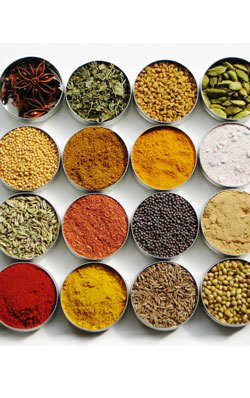
Pitta is one of the tridoshas (somatic humors). The term Pitta is derived from the Sanskrit root "tap" and it has three meanings viz, to burn, to generate heat, to enable the eightfold achievements. Pitta is responsible for the generation of heat, burning the food ingested, etc. The theories of digestion and metabolism in Ayurveda are based on the concept of Pitta.
The colour of Pitta is blue and yellow, the tastes are Katu (pungent) and amla (acid). Pitta is drava (fluid), ushna (hot), snigdha (unctous), tikshna (penetrative), sara (mobile), laghu (light) and visada (clear). The smell of Pitta is visra (smell of raw meat). The normal quantity of Pitta in the body is five anjali i.e., five times the quantity that can be contained the hollow of one's hand. The seats of Pitta is sweda (sweat), rasa (nutrient body fluid), lasika (lymph), rudhira (blood), amasaya (stomach), nabhi (umbilical region), chakshu (eyes) and sparsanam (skin). The adhoamasaya (lowerpart of stomach) is considered as the special seat of Pitta.
The functions of Pitta are digestion of the food, production of hunger, power of visions, production of normal body heat, normal colour and complexion of the body, softness of the body, luster, intelligence, courage, cheerfulness and lucidity of the mind.
The Pitta according to ayurveda is comparable to agni or fire, as its functions in the living body resemble those of the agni viz.paka or pachana(digest). Agni in the body is implicit in the Pitta. The functions of dahana (to burn), paka (to digest), ushnatva (to make hot), etc. are conducted by the agni in the physical world and it is stated that these functions are conducted by the Pitta in the body. Since the above mentioned functions can never exhibit themselves in the human body without the intervention of the Pitta, the Pitta therefore is called the internal fire or antaragni.
The enfeebled action of the Pitta is remedied by the administration of drugs and substances that have qualities or attributes of agni, while the excessive action of Pitta is subdued by moisture. Based on this it can be concluded that, the Pitta in the human body and the agni are identical. But a study of the difference in the qualities of the Pitta and agni will reveal that, the Pitta is only an agneya dravya but not agni (fire) itself. Pitta is a panchabhautika dravya (made up of five bhutas) with a predominance of agni bhuta in it.
The conventional five divisions of Pitta are Pachakapita, RanjakaPitta, SadhakaPitta, AlochakaPitta and BrajakaPitta.
The main function of PachakaPitta is the digestion of food. It is stated to be the controller of all other Pittas in the body. They are originated from it. Their waxing and waning are dependent upon the increase and decrease of the Pachakapith. The location of PachakaPitta is interior of the amasaya (stomach) and Pakvasaya (intestine) are combinedly known as koshta. Both these asayas have an inner layer (mucous membrane) called Pittadharakala which produces PachakaPitta. The health of an individual is dependent on the proper functioning of the PachakaPitta.
RanjakaPitta, another manifestation of Pitta is seated in liver and spleen and helps in formation of blood.
Pitta located in hridaya (heart) is called SadhakaPitta and is responsible for intelligence, memory, self esteem and enthusiasm in an individual. Hence it is debated that hridaya mentioned in ayurveda in this context is not heart but brain.
AlochakaPitta is the Pitta situated in eye and is responsible for vision and also has additional effect on concentration, response and cognition.
BrajakaPitta is the Pitta located in skin and imparts lusture and colour to the skin. It also maintains the normal body temperature.



.jpg)

